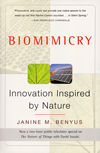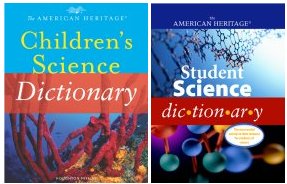Inspired by Nature Additional Information
You can learn more about biomimicry and learning from nature at www.biomimicry.org/intro.html.
The text of a presentation by Janine Benyus about biomimicry is available at flow.doorsofperception.com/content/benyus_trans.html (Doors of Perception 2002).
For a definition of biomimicry, see www.all-science-fair-projects.com/science_fair_projects_encyclopedia/Biomimicry (All Science Fair Projects).
To learn more about beetles that collect water off their backs, see www.ox.ac.uk/blueprint/2001-02/0612/15.shtml (Oxford Blueprint, University of Oxford) and biomechanics.bio.uci.edu/_html/nh_biomech/namib/beetle.htm (Adam Summers, Natural History, American Museum of Natural History).
Gorman, Jessica. 2000. Conch yields clues for future materials. Science News 158(July 1):6. Available at http://www.sciencenews.org/articles/20000701/fob4.asp.
Lock, Carrie. 2004. Are propellers fin-ished? Science News for Kids (Sept. 15). Available at http://www.sciencenewsforkids.org/2004/09/are-propellers-fin-ished-2/.
McDonagh, Sorcha. 2003. Sticking around with gecko tape. Science News for Kids. (June 11). Available at http://www.sciencenewsforkids.org/2003/06/sticking-around-with-gecko-tape-3/.
Sohn, Emily. 2004. Cold house, hot house, green house. Science News for Kids (Oct. 20). Available at http://www.sciencenewsforkids.org/2004/10/cold-house-hot-house-green-house-2/.
______. 2004. Spinach power for solar cells. Science News for Kids (June 9). Available at http://www.sciencenewsforkids.org/articles/20040609/Note2.asp.
______. 2003. How a gecko defies gravity. Science News for Kids (Nov. 19). Available at http://www.sciencenewsforkids.org/2003/11/how-a-gecko-defies-gravity-2/.
______. 2003. Worm jaws have metal power. Science News for Kids (Aug. 6). Available at http://www.sciencenewsforkids.org/2003/08/worm-jaws-have-metal-power-3/.
______. 2003. Butterfly wings and waterproof coats. Science News for Kids (March 5). Available at http://www.sciencenewsforkids.org/2003/07/butterfly-wings-and-waterproof-coats-3/.
Recommended books:
 |
Biomimicry — Janine M. Benyu
Published by William Morrow, 1997.
Biomimicry is a revolutionary new science that analyzes nature’s best ideas—spider silk and prairie grass, seashells and brain cells—and adapts them for human use. Science writer and lecturer Janine Benyus takes us into the lab and out in the field with the maverick researchers who are applying nature’s ingenious solutions to the problem of human survival: stirring vats of proteins to unleash their signaling power in computers; analyzing how spiders manufacture a waterproof fiber five times stronger than steel; studying how electrons in a leaf cell convert sunlight to fuel in trillionths of a second; discovering miracle drugs by observing what animals eat—and much more. The products of biomimicry are things we can all use—medicines, “smart” computers, superstrong materials, profitable and earth-friendly business. Biomimicry eloquently shows that the answers are all around us. |
Power Words
biodegradable Capable of being broken down into simpler parts by natural processes, especially by the action of bacteria. All living things are made up of biodegradable matter that decays after death. Some man-made products, like detergents, can also be biodegradable, while others, such as plastics, are not.
calcium carbonate A white chemical compound that is found in chalk, limestone, marble, and seashells. It is made of calcium, carbon, and oxygen and is used to make toothpaste and white paint.
mollusk A type of animal that has a soft body and usually lives inside a hard shell. Most mollusks live in water. Snails, slugs, oysters, clams, scallops, octopuses, and squids are all mollusks. Mollusks are invertebrates.
Copyright © 2002, 2003 Houghton-Mifflin Company. All rights reserved. Used with permission.
